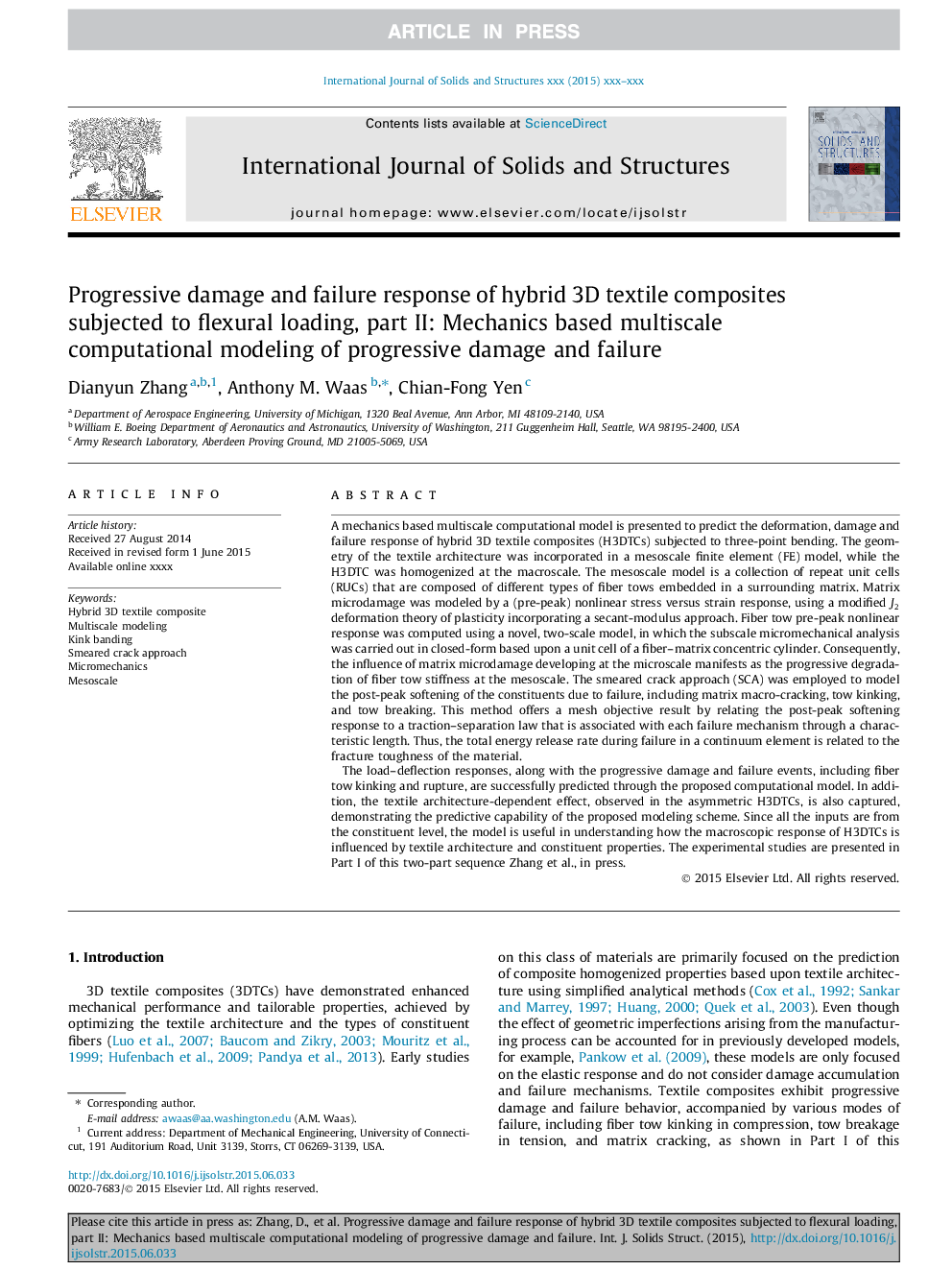| Article ID | Journal | Published Year | Pages | File Type |
|---|---|---|---|---|
| 6748685 | International Journal of Solids and Structures | 2015 | 15 Pages |
Abstract
The load-deflection responses, along with the progressive damage and failure events, including fiber tow kinking and rupture, are successfully predicted through the proposed computational model. In addition, the textile architecture-dependent effect, observed in the asymmetric H3DTCs, is also captured, demonstrating the predictive capability of the proposed modeling scheme. Since all the inputs are from the constituent level, the model is useful in understanding how the macroscopic response of H3DTCs is influenced by textile architecture and constituent properties. The experimental studies are presented in Part I of this two-part sequence (Zhang et al., 2015).
Related Topics
Physical Sciences and Engineering
Engineering
Civil and Structural Engineering
Authors
Dianyun Zhang, Anthony M. Waas, Chian-Fong Yen,
